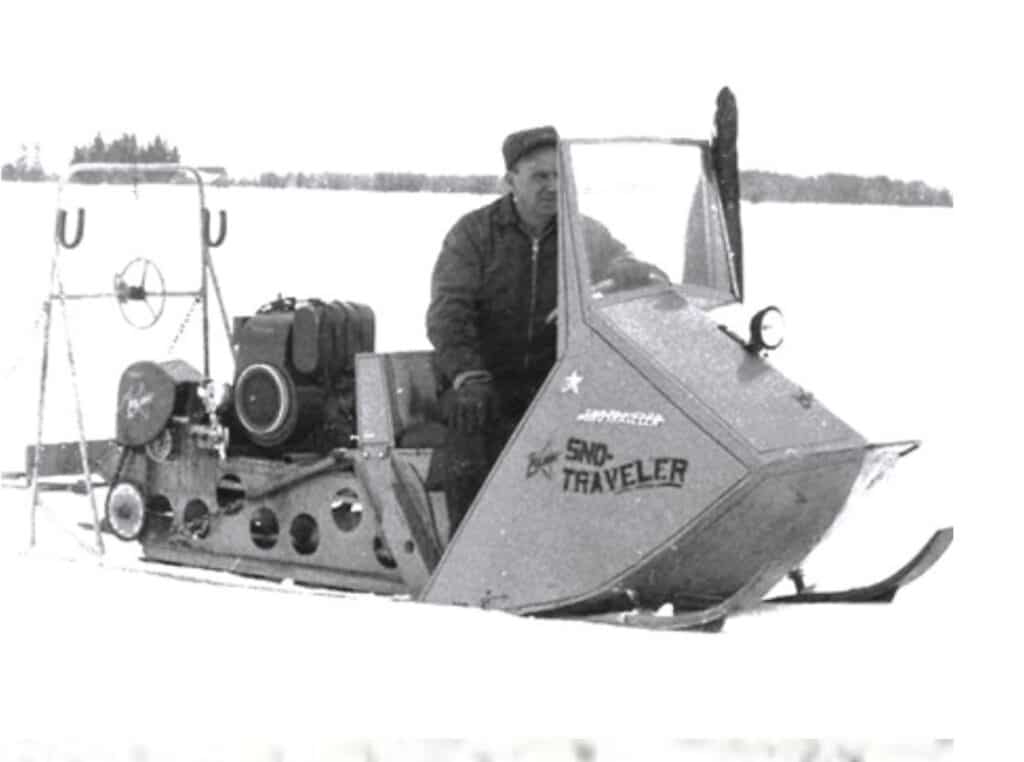January 12, 2024:
Polaris- It all began in 1954 in a small town nestled in the heart of farm country.
Roseau was a small town consisting of mostly farmers until one day when three men in a shop had the idea of building a motorized sled to help with winter tasks. This is the story of how a small-town dream, hard work, and risk created a 70-year-old legacy. This is the story of a company in the making. A company that was once paying employees out of their pockets to make ends meet to a $5.28 Billion Fortune 500 Company in 2024.

On June 30, 1960, Polaris shareholders approved a plan to reorganize the company and raise new capital through a private stock offering.
Allan Hetteen
David Johnson assumed the title of vice president in charge of production. No one at Polaris, except perhaps David Johnson (who said he had no desire to run the company) knew more or cared more about the company than Allan.
David Johnson
The older brother, Edgar, had resigned as President due to a disagreement with the Polaris Board of Directors.
Allan Hetteen (left), Edgar Hetteen, (center), Albin Erickson (right) working on the clutch of the Sno-Traveler.
Edgar and his family moved to Alaska, where Edgar had planned to start a new career as an independent sales representative. Less than a year after moving to Alaska, Edgar returned to northern Minnesota, settling in Thief River Falls, and starting a new business, Polar Manufacturing. He later renamed the company Arctic Enterprises. Within a year of startup, Edgar’s company was manufacturing a snowmobile called Arctic Cat.
Under the guidance of Allan Hetteen and David Johnson, the company began expanding the snowmobile line, introducing a new generation of snow machines.
The design of the machines was smaller, lighter, more sporty-looking, and easier to maneuver than the full-size Sno-Traveler.
In 1962 snow machine sales had increased , and so did the need to expand a larger, more modern manufacturing plant. Through the efforts of Allan Hetteen and David Johnson meeting with, and persuading Bob Foley, a former FDIC inspector, who had joined Citizens’ State Bank of Roseau, MN in 1961 as Vice President and Director, to organize a corporation called the Roseau Research and Development Corporation.
Robert (Bob) Foley, Sr.
This would help solve the financial issues Polaris Industries was facing. Foley and his group raised $40,000 and worked with the Small Business Administration, securing a $170,000 loan for the new facility, which included a manufacturing plant, research and development facilities, plus administrative offices. The company would be located on the south side of Roseau, along State Highway 89, and within proximity to the railroad tracks.
In May 1963 Polaris Industries moved into a new 41,000-square-foot plant. Soon two shifts were running producing the snowmobiles. Snowmobile sales were now at one million dollars in one year!
Polaris worked on building a network of distributors during the early 1960s, thanks in part to Allan Hetteen’s efforts to explain what Polaris snowmobiles could do.
Allan (on the right) is networking with a potential candidate to become a Polaris Distributor.
Allan, (on the left) is pictured with Ray Brandt, a Polaris Distributor, visiting with First Lady Mamie Eisenhower.
One of the first national Polaris Distributor conferences.
The leadership had great vision and the production of new models of machines brought new potential growth. Polaris was going somewhere.
